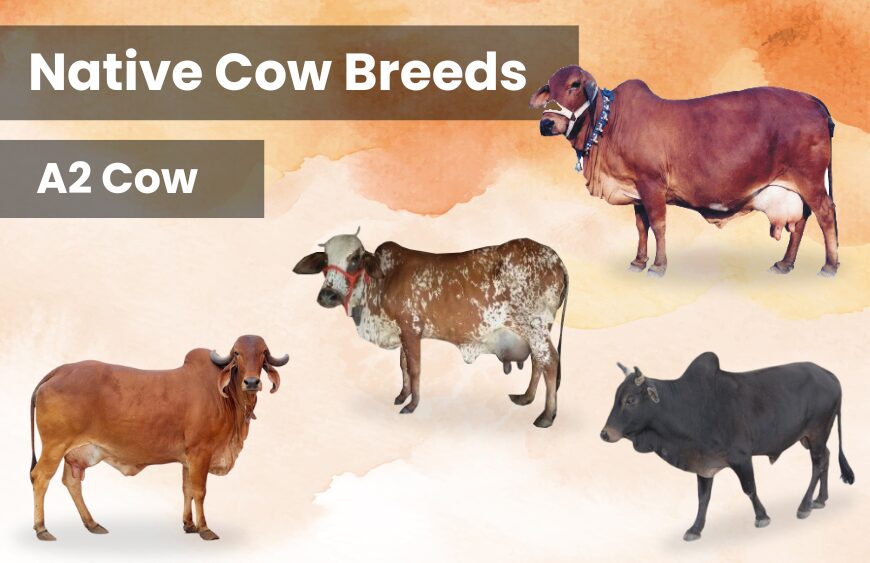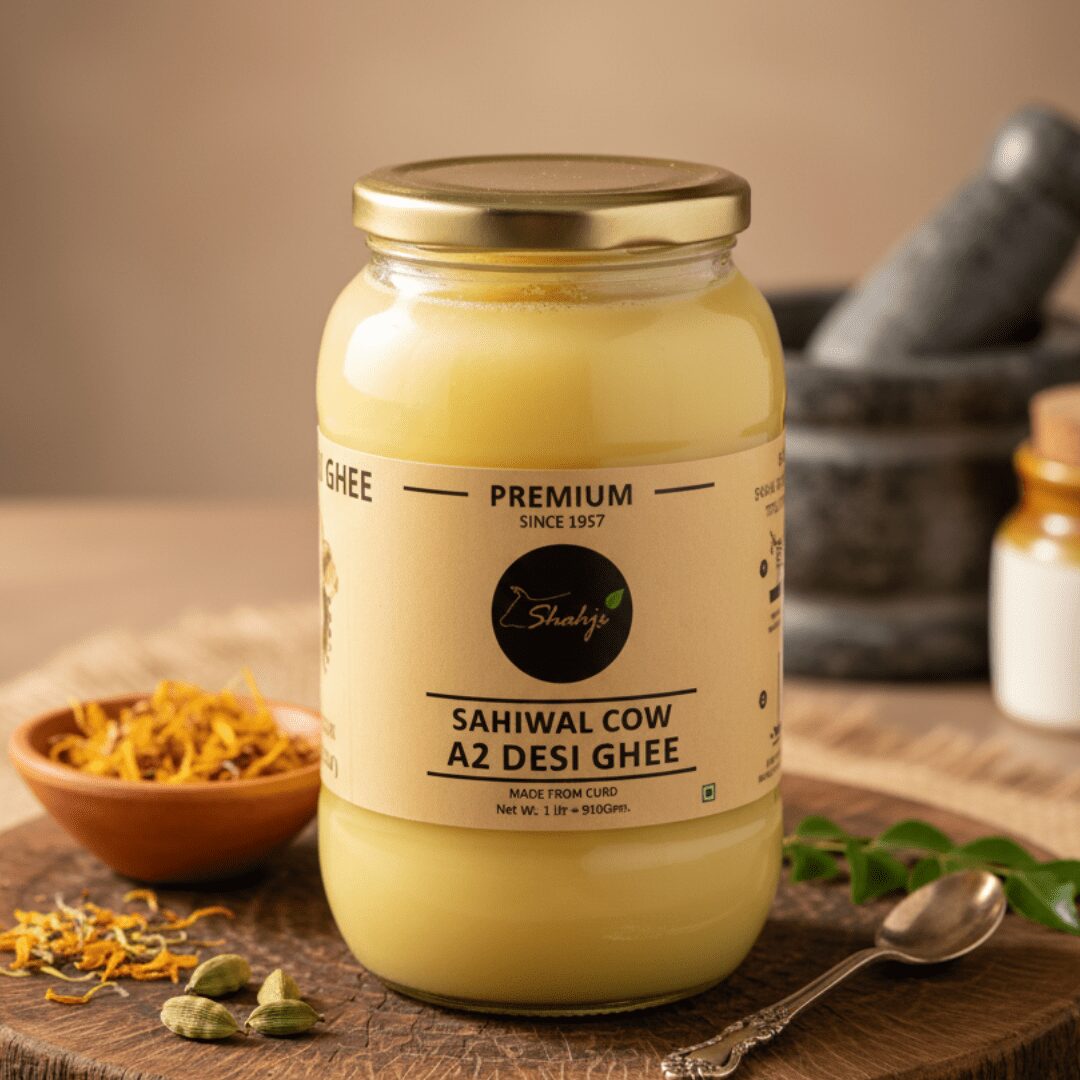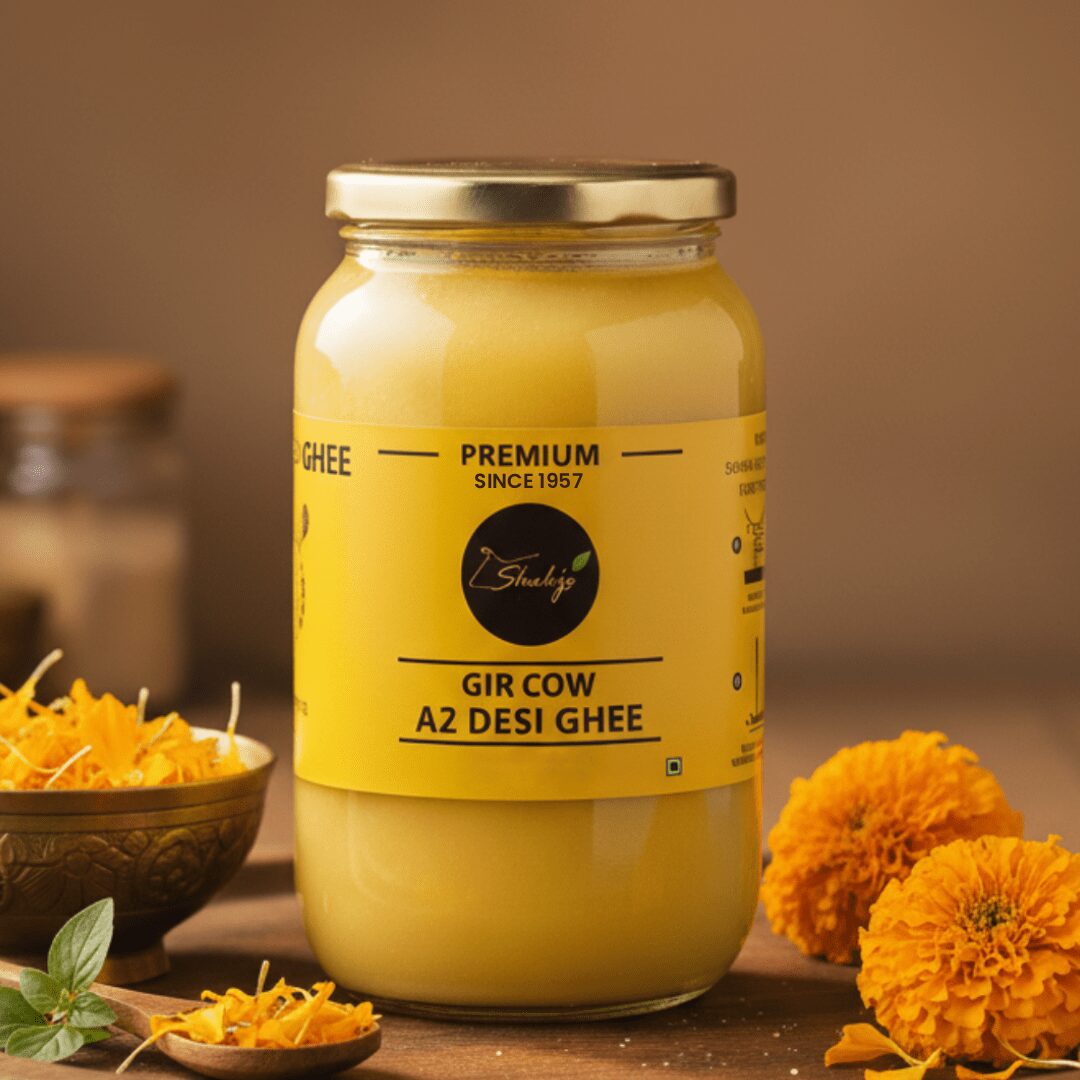Best Native Cow Breeds for A2 Ghee Production

Understanding native cow breeds is essential for producing high-quality A2 ghee. These breeds are celebrated for their superior milk quality, particularly their A2 milk, which is increasingly recognized for its health benefits. In this article, we will explore the top native cow breeds known for their exceptional A2 milk production and highlight their unique characteristics.
We will examine the breeds that are ideal for A2 ghee production, as well as their cultural and historical significance in various communities. Additionally, we will discuss the health advantages of A2 milk and emphasize the importance of selecting native breeds for sustainable dairy practices.
If you are looking for the best ghee for cooking or wish to learn more about these remarkable cow breeds, you are in the right place. Let’s delve into the world of native cow breeds and discover how they can enhance your culinary journey.
Types of Native Cow Breeds for A2 Ghee Production
Native cow breeds play a vital role in A2 ghee production in India due to the unique properties of their milk. These breeds produce A2 milk, which is known for being nutrient-rich and healthier compared to A1 milk. Here, we will highlight some of the key native cow breeds that excel in A2 milk production, enhancing both the quality and flavor of ghee.
The Gir cow is one of the most prominent breeds, celebrated for its high milk yield and rich fat content. Gir cows primarily produce A2 milk, which contains beta-casein that is easier to digest. Their milk typically has over 14% fat and about 4.5% protein, making it ideal for ghee production.
Another important breed is the Sahiwal cow, well-adapted to India’s climate. Sahiwal cows produce around 10 to 15 liters of A2 milk daily, with an average fat content of 5%. This richness contributes to the distinctive flavor of A2 ghee.
In addition to these breeds, the Red Sindhi and Tharparkar cows are also noteworthy. The Red Sindhi is recognized for its high fat content, often exceeding 5.5%. Meanwhile, Tharparkar cows strike a good balance between quantity and quality, producing nutritious A2 milk that further benefits ghee.
A2 milk offers numerous health benefits, including a lower risk of specific health issues compared to A1 milk. Its high calcium and protein content supports bone health and muscle development, underscoring the significance of these native cow breeds.
In India, native cow breeds are essential to traditional farming, representing a sustainable lifestyle. These cows are typically reared on family farms, which nurtures a meaningful connection between farmers and their livestock.
Let’s now explore the top five native cow breeds that excel in A2 milk production and their contribution to ghee.
Top 5 Native Cow Breeds for A2 Milk Production
Native cow breeds are significant for A2 milk production, as they produce milk containing A2 beta-casein protein. This type of milk is often easier to digest and provides more health benefits than A1 milk. Here are five native cow breeds that are especially valued for their A2 milk.
The Gir cow, from the Gir forest in Gujarat, is one of the most popular native cow breeds. These cows typically yield between 12 to 18 liters of milk daily, with around 90% being A2 milk. Their resilience and adaptability to various climates make them a top choice for farmers.
Another noteworthy breed is the Sahiwal cow, which originates from the Punjab region. Known for their high fat content of 4.5% to 5%, Sahiwal cows produce 10 to 15 liters of milk daily. This makes them particularly suitable for the production of high-quality A2 ghee.
In the Himalayas, the Badri cow thrives. This breed produces between 8 to 12 liters of easily digestible A2 milk daily. Their ability to adapt to diverse terrains adds to their importance in the A2 dairy market.
The Pahadi cow, although smaller in size, contributes significantly by producing 5 to 7 liters of nutritious A2 milk each day. Despite their lower yield, their high-quality milk is well-regarded for being easy to digest.
Lastly, the Rathi cow is notable for its dual-purpose utility, producing 10 to 15 liters of A2 milk daily while also serving as draught animals. This breed is particularly important for A2 ghee production in Rajasthan and surrounding areas.
These native cow breeds play a crucial role in enhancing the quality and quantity of A2 milk and ghee production. In the next section, we will explore the health benefits associated with consuming A2 milk from these exceptional breeds.
Health Benefits of A2 Milk from Native Cow Breeds
A2 milk from native cow breeds offers significant health benefits compared to A1 milk. It is easier to digest, making it a great choice for individuals with lactose sensitivity or other digestive issues because it lacks the A1 beta-casein protein.
This milk is also rich in essential vitamins and minerals that support the immune system. It contains higher levels of vitamins A, D, and E, which are crucial for maintaining overall health and preventing nutrient deficiencies.
Moreover, A2 milk is packed with essential fatty acids that promote heart health by improving cardiovascular function and reducing the risk of heart disease. Its reduced potential for causing allergies compared to A1 milk makes it suitable for families, particularly those with children or individuals prone to milk allergies. This quality makes A2 milk a safe choice for all ages.
The numerous health advantages of A2 milk emphasize the value of native cow breeds. As we look ahead, we should recognize their cultural significance and their important role in the production of A2 ghee.
Cultural Importance of Native Cow Breeds and A2 Ghee
Native cow breeds in India play a crucial role in both agricultural practices and spiritual traditions. Breeds such as Gir, Sahiwal, and Tharparkar are not only vital for milk production but are also essential for preserving biodiversity and promoting sustainable farming. Their natural adaptability makes them invaluable assets in agriculture.
A2 ghee, produced from the milk of native cow breeds, holds a significant place in traditional Ayurvedic practices. Often referred to as ‘Ghritam’ in Ayurveda, A2 ghee is celebrated for enhancing vitality and overall health. Its distinct protein structure sets it apart, making it easier to digest and beneficial for the digestive system. Moreover, the traditional bilona method of making A2 ghee, which involves hand-churning, ensures the highest quality and authenticity of the product.
Beyond their agricultural benefits, native cow breeds contribute to ecological balance. These cows thrive on pasture, which promotes soil health and supports sustainable farming practices. This symbiotic relationship not only boosts agricultural productivity but also positively impacts the environment. In rural communities, these cows are highly valued as they connect locals to their heritage, customs, and welfare.
Recently, there has been a surge of interest in A2 ghee, driven by its association with wellness and sustainability. This trend revives respect for ancestral practices while aligning with modern health-conscious and sustainable living goals.
In the next section, we will delve deeper into the significance of native cow breeds, addressing common questions about their contributions to A2 ghee production.
Native Cow Breeds and A2 Ghee
This section answers common questions regarding native cow breeds and their significance in A2 ghee production, benefiting both new and seasoned cow farmers.
What are the top native cow breeds for A2 milk?
The leading native cow breeds recognized for A2 milk production include Gir, Sahiwal, Tharparkar, Red Sindhi, and Kankrej. These breeds are effective in producing A2 milk and adapt well to various farming conditions across India.
Frequently Asked Questions – FAQs
What are the top native cow breeds for A2 milk?
The leading native cow breeds recognized for A2 milk production include Gir, Sahiwal, Tharparkar, Red Sindhi, and Kankrej. These breeds are effective in producing A2 milk and adapt well to various farming conditions across India.
How does A2 milk differ from A1 milk?
A2 milk exclusively contains A2 beta-casein protein, making it easier to digest. This characteristic may result in fewer digestive issues compared to A1 milk, potentially offering health benefits.
Can native cow breeds thrive in various climatic conditions?
Absolutely. Many native cow breeds, such as Sahiwal and Gir, excel in different climates. Sahiwal thrives in hot, humid areas, while Gir is well-suited for semi-arid parts of Gujarat, demonstrating their resilience in diverse environments.
What makes A2 Ghee more nutritious than regular ghee?
A2 ghee, derived from A2 milk, is often perceived as more nutritious than ghee from A1 milk. It boasts higher levels of essential fatty acids and vitamins D, A, and K, along with Conjugated Linoleic Acid (CLA), known for its antioxidant properties. This enhanced nutritional profile has made A2 ghee a preferred choice for cooking and health.
Conclusion
Choosing the right native cow breeds is essential for producing high-quality A2 ghee. This article discussed several breeds known for their A2 milk, which offers numerous health benefits, including better digestion and enhanced nutritional value. Beyond their health advantages, these breeds are significant to our cultural heritage, highlighting their vital role in agriculture and community life.
We encourage both seasoned dairy farmers and newcomers to consider these insights in their farming practices. By focusing on native cow breeds, you can ensure superior milk quality while also preserving agricultural traditions. Discover the many benefits these breeds provide as you support a healthier lifestyle.
Incorporating native cow breeds into your dairy operations not only enhances product quality but also reinforces your community’s dedication to sustainable farming. Together, let’s celebrate and promote the unique advantages of native cow breeds!
About Shahji Ghee

Shahji Ghee specializes in providing high-quality, hand-churned A2 desi ghee, sourced from native Indian cow breeds such as Gir and Sahiwal.
This matters because it offers health-conscious consumers and traditional cooking enthusiasts a pure, nutritious alternative to conventional cooking fats, promoting wellness and authenticity in every dish.
Experience the goodness of traditional ghee for yourself—visit shahjighee.com today!













